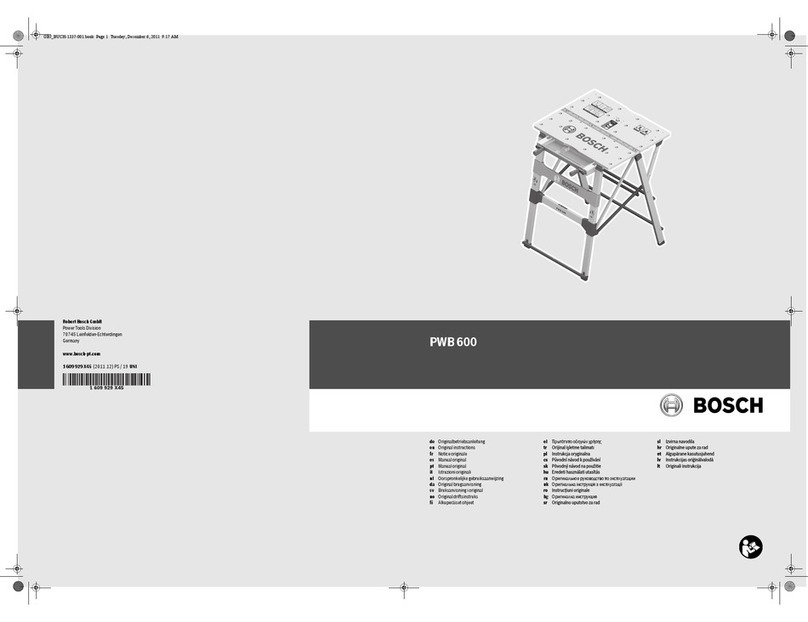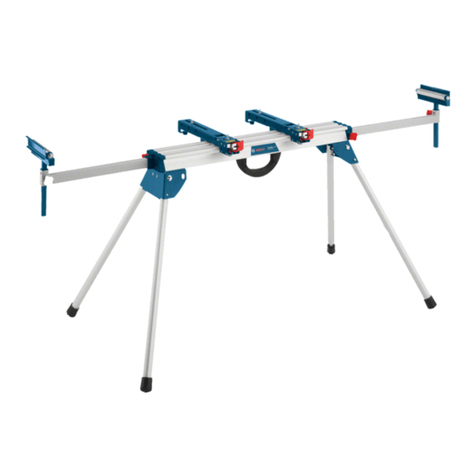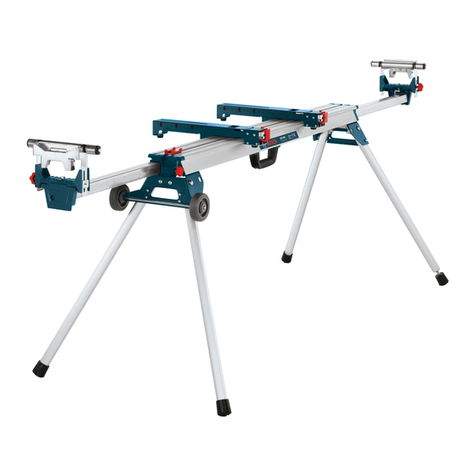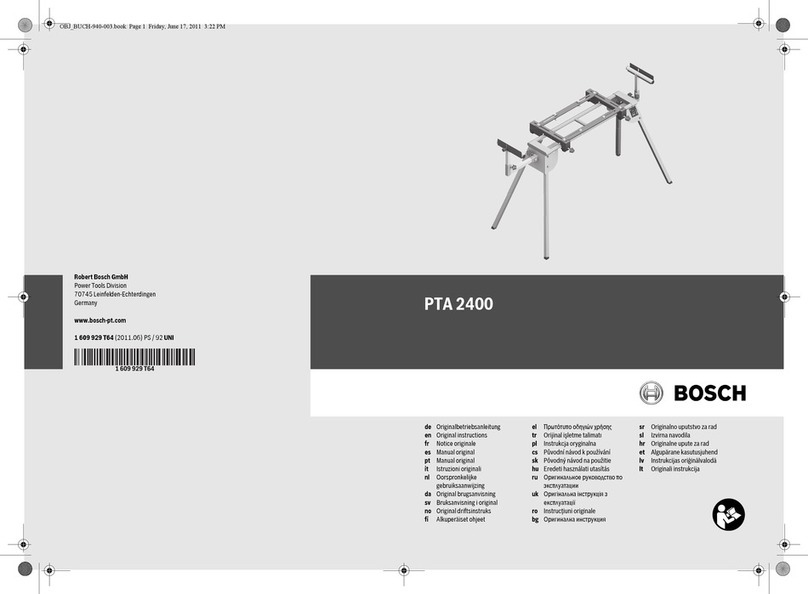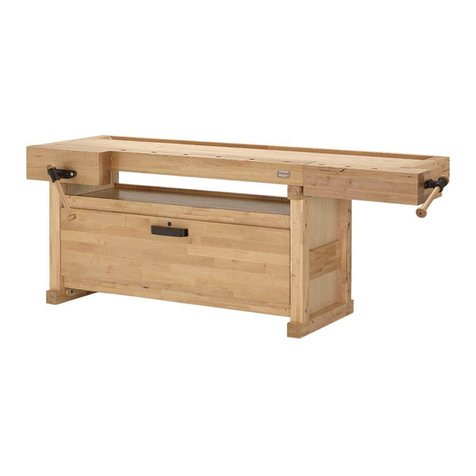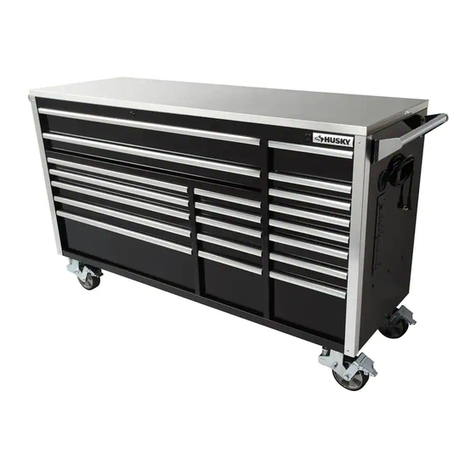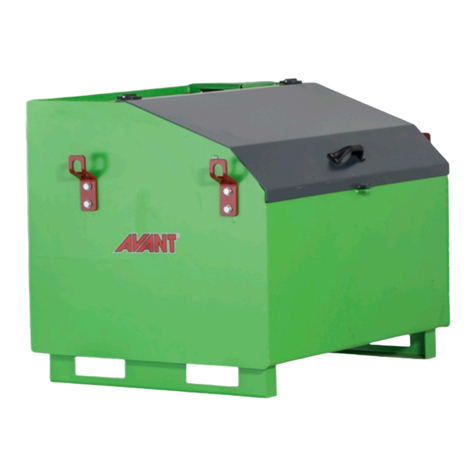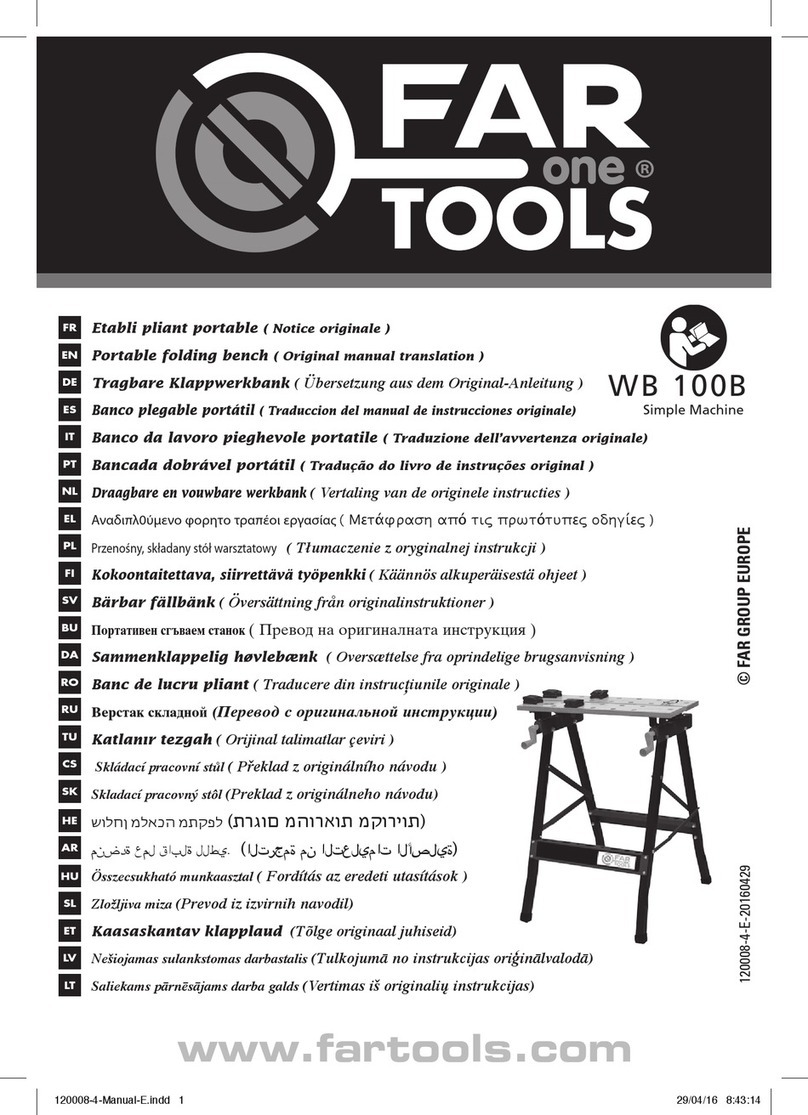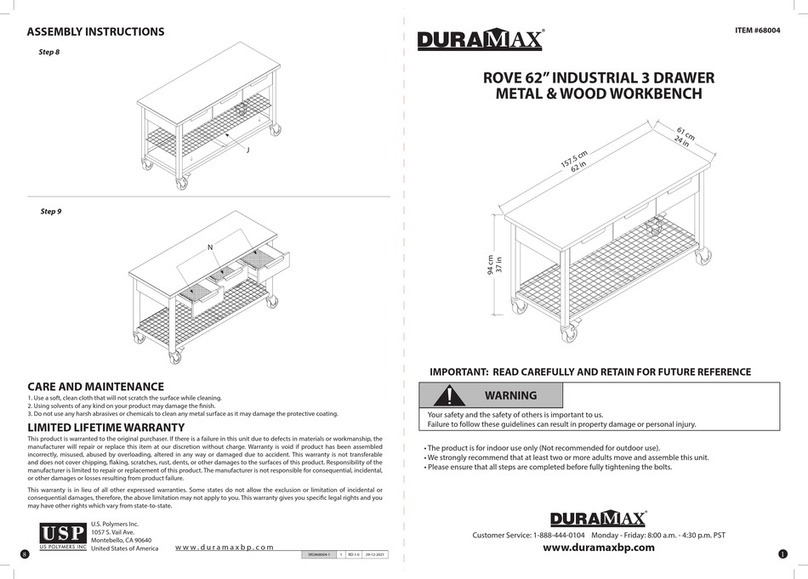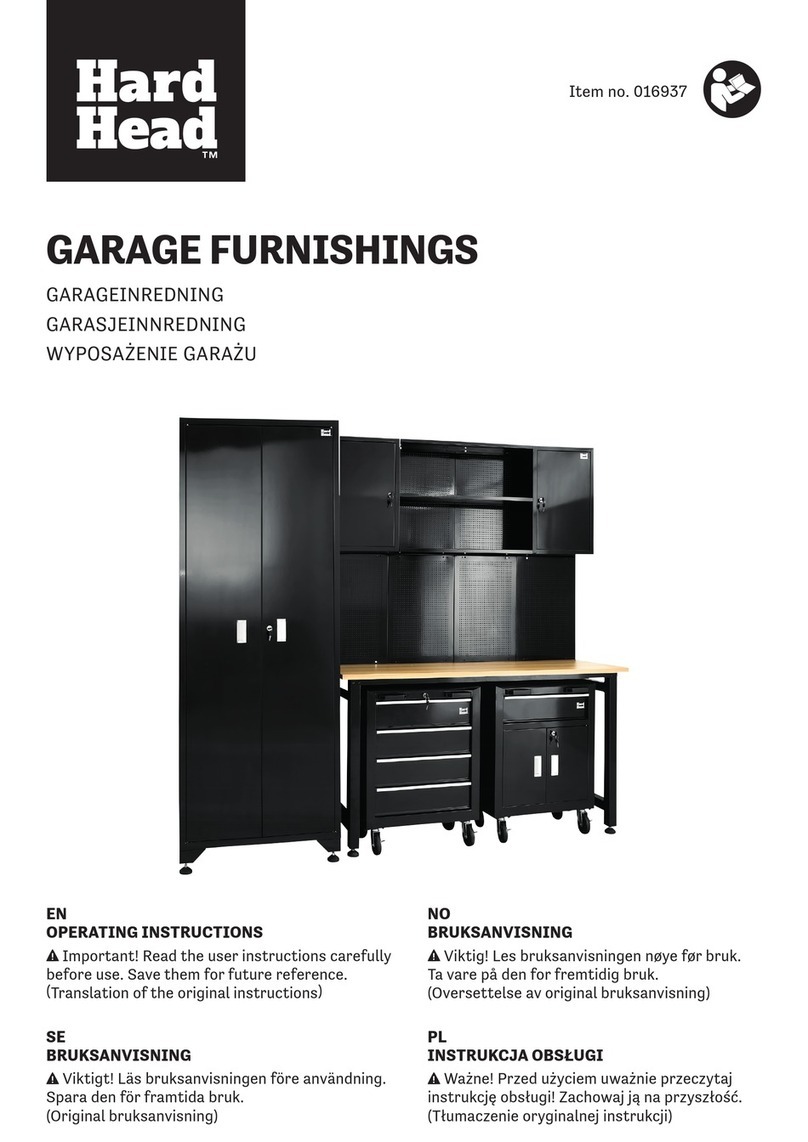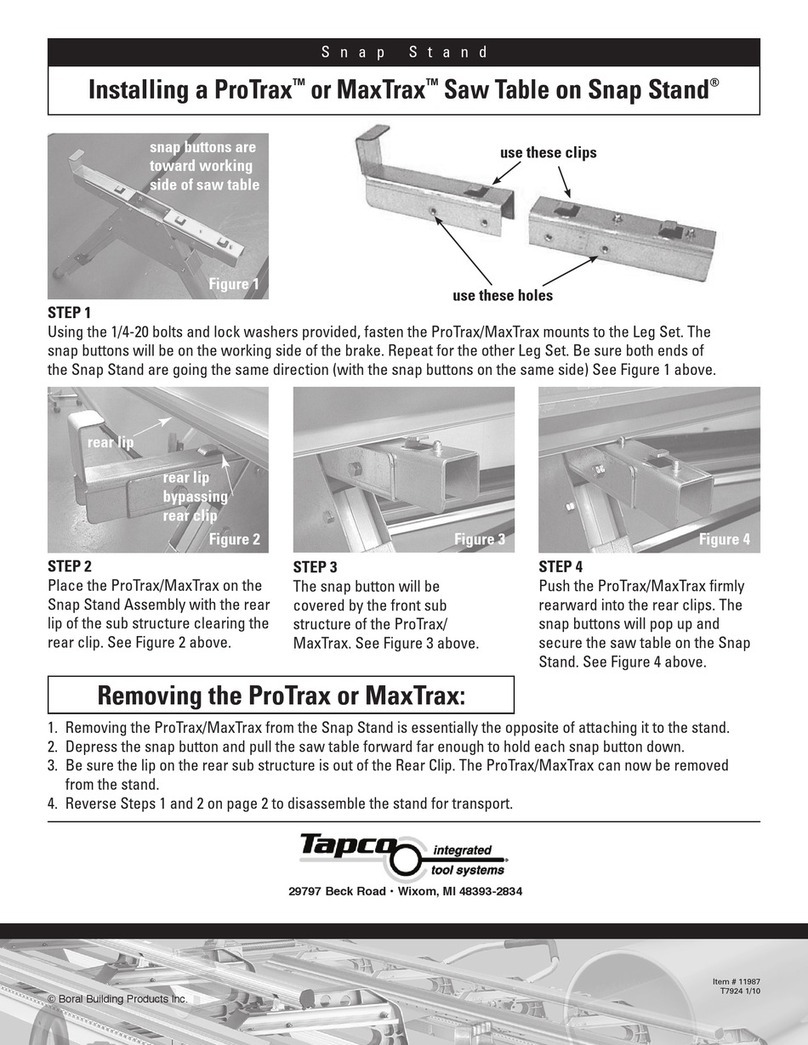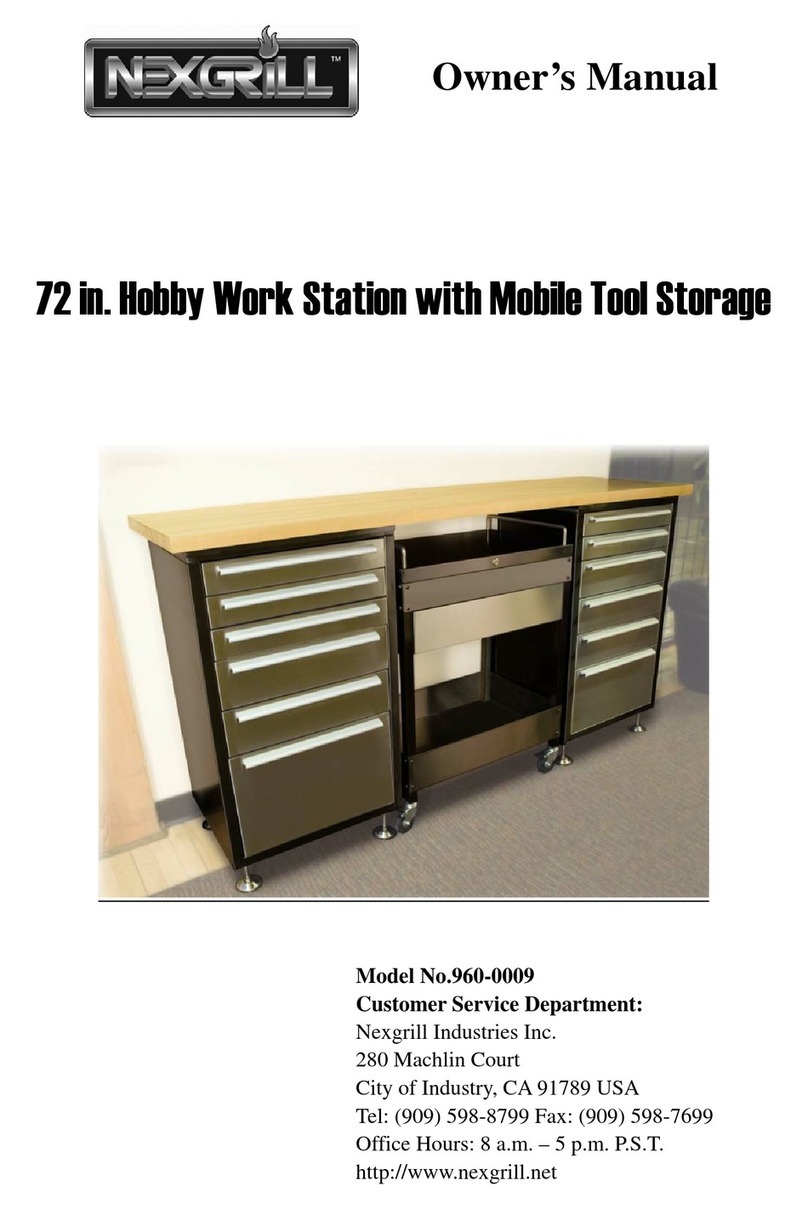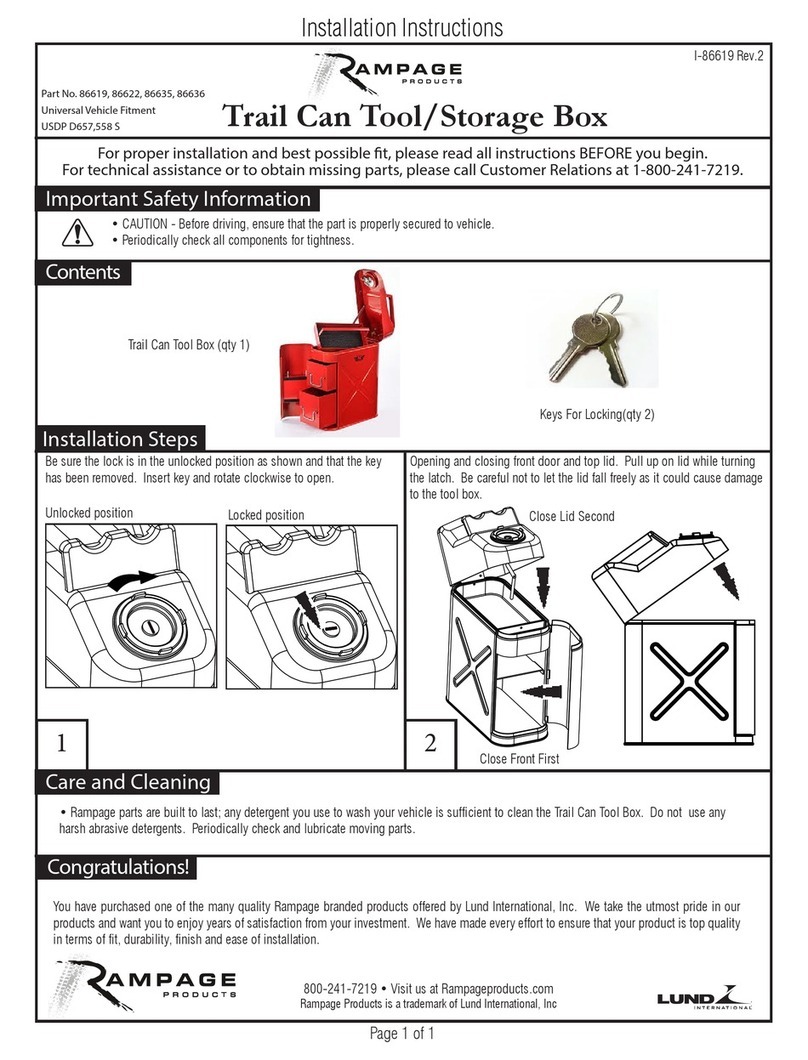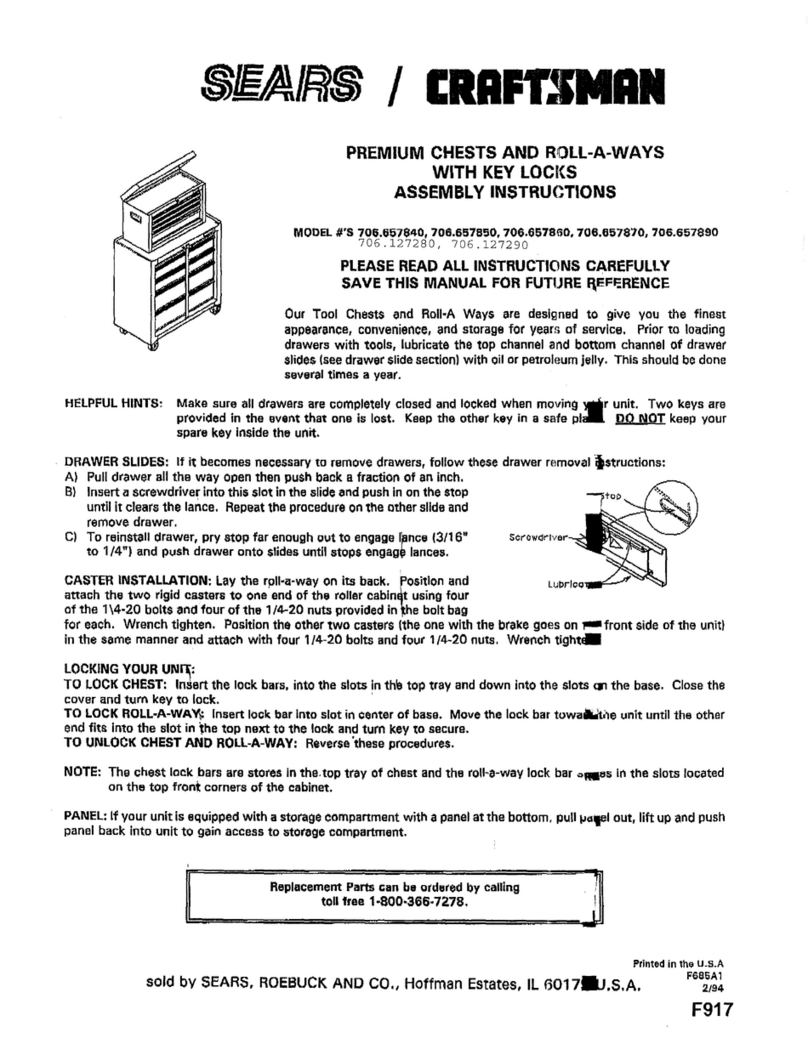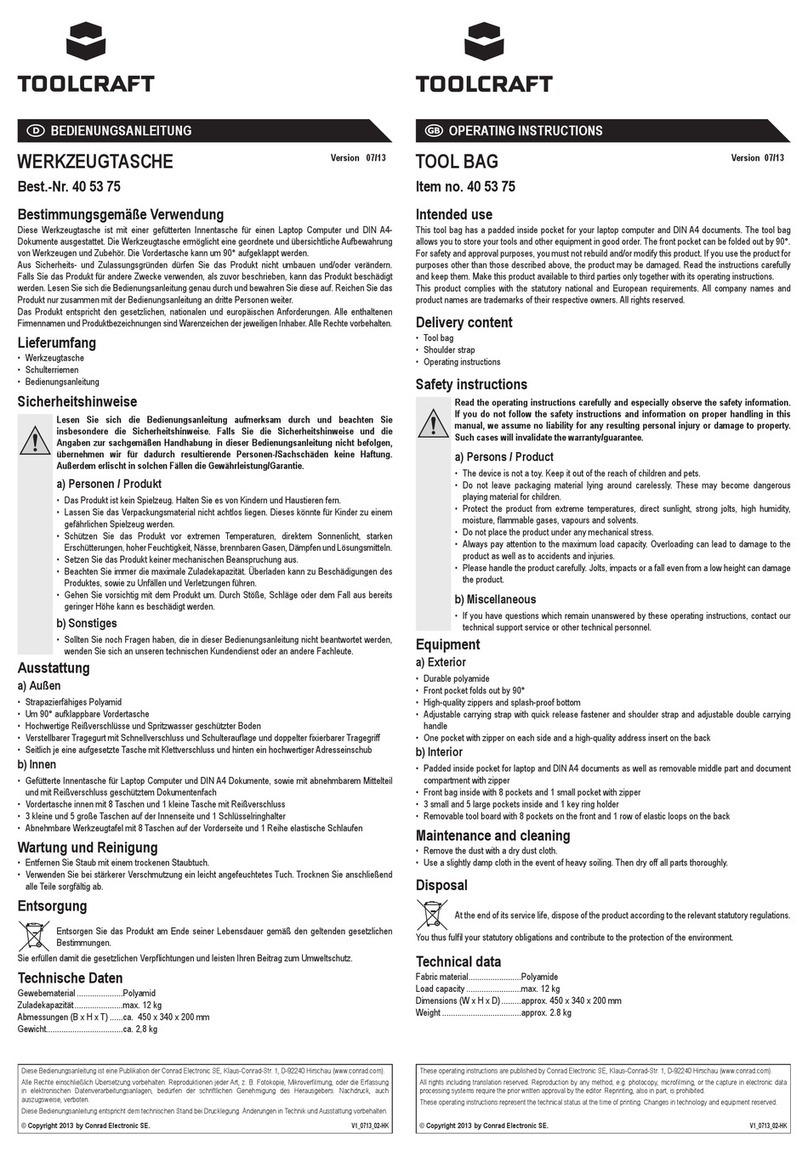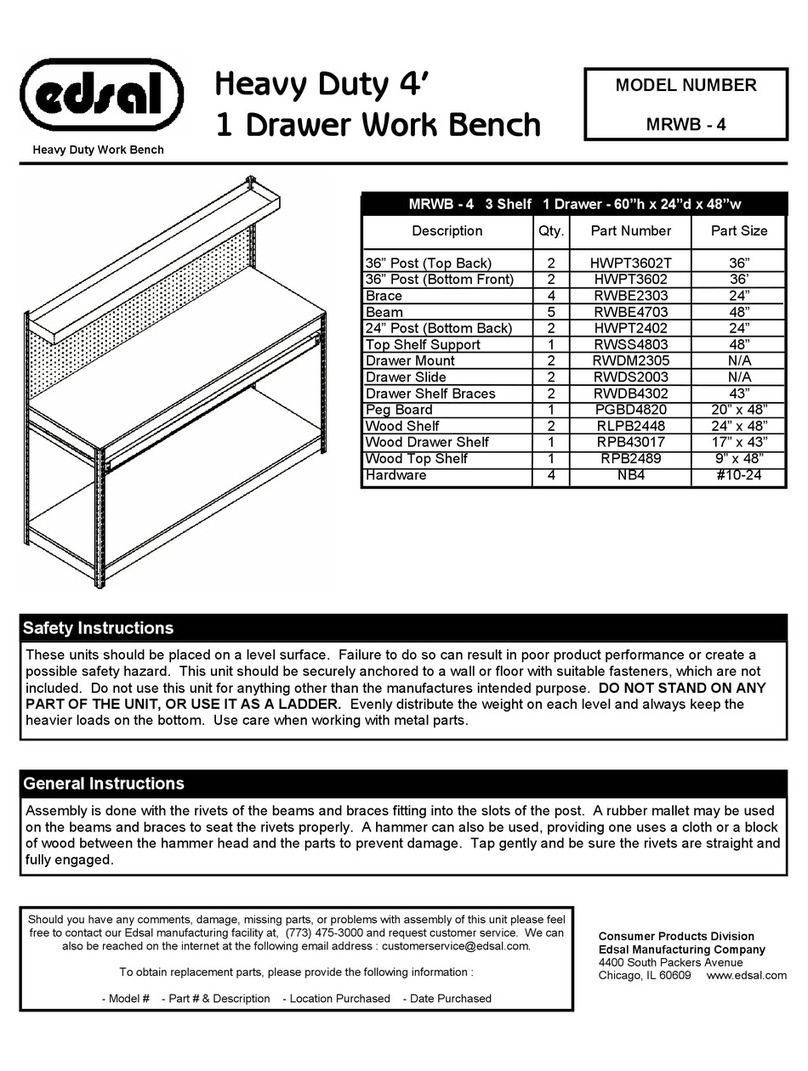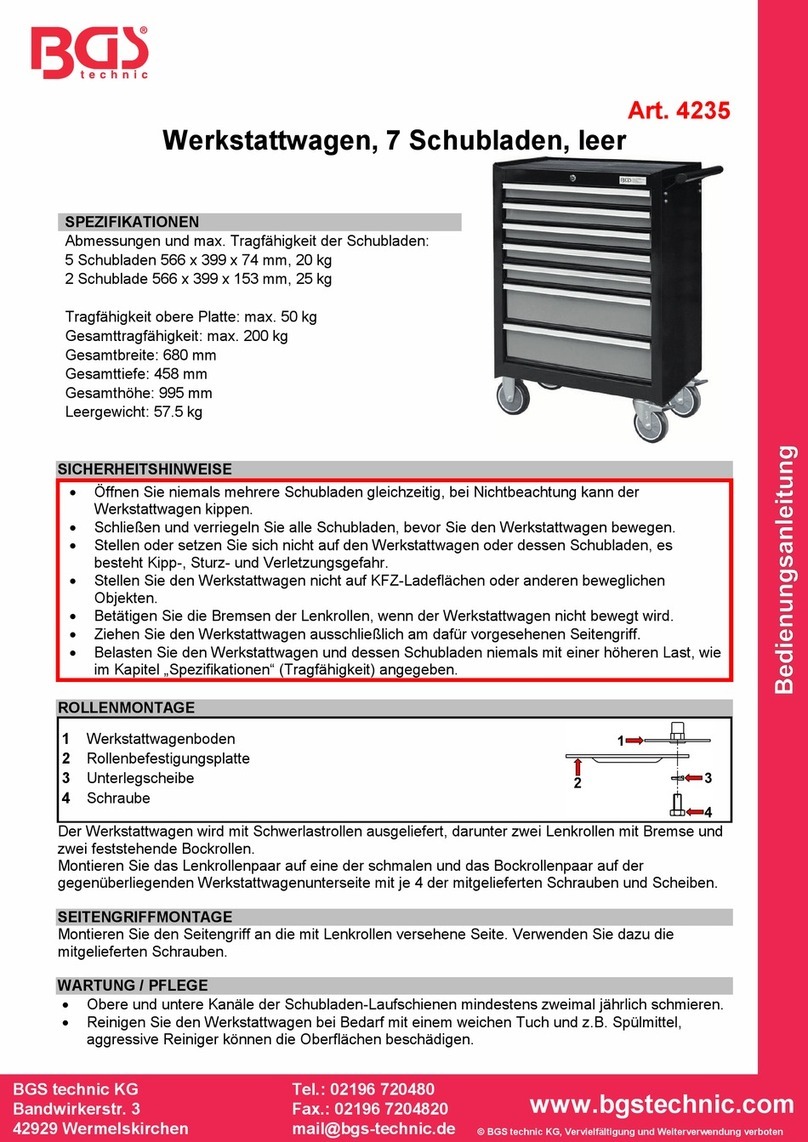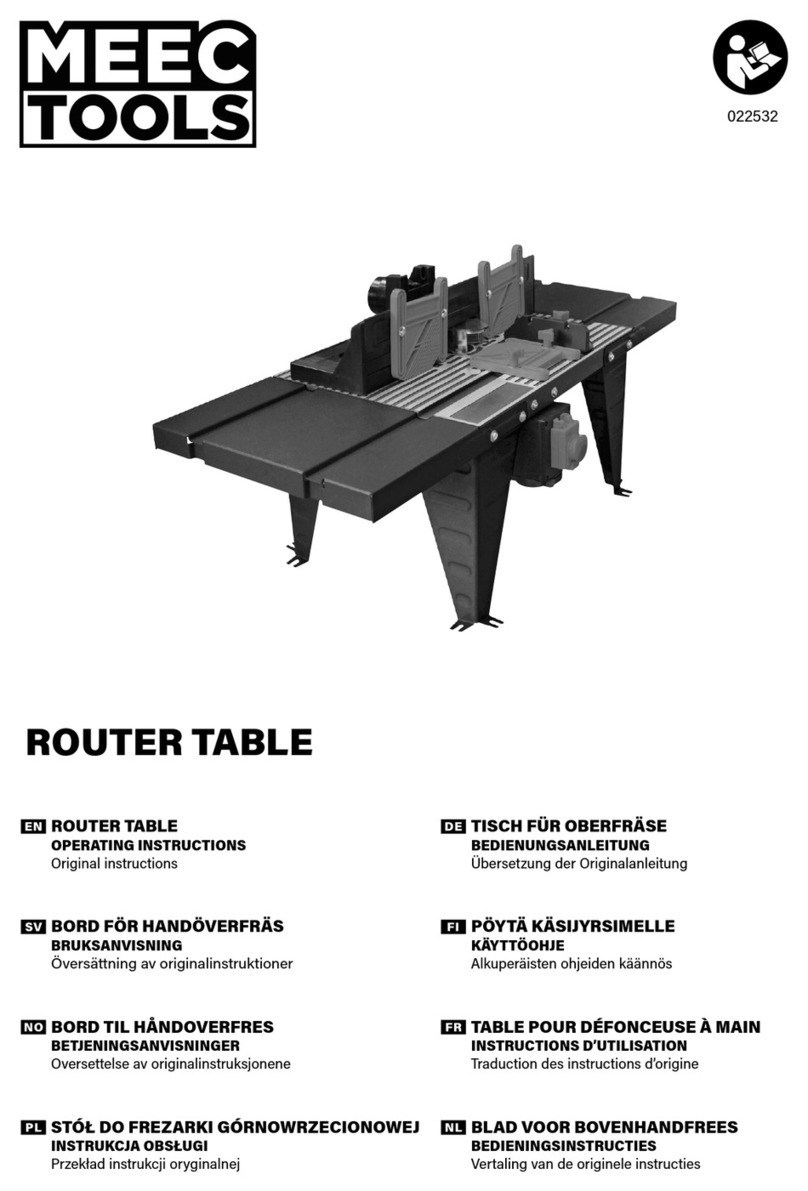Bosch PTA 2000 User manual

Robert Bosch GmbH
Power Tools Division
70745 Leinfelden-Echterdingen
Germany
www.bosch-pt.com
1 619 929 K24 (2012.03) PS / 77 UNI
PTA 2000
de Originalbetriebsanleitung
en Original instructions
fr Notice originale
es Manual original
pt Manual original
it Istruzioni originali
nl Oorspronkelijke
gebruiksaanwijzing
da Original brugsanvisning
sv Bruksanvisning i original
no Original driftsinstruks
fi Alkuperäiset ohjeet
el Ðñùôüôõðï ïäçãéþí ÷ñÞóçò
tr Orijinal işletme talimat
pl Instrukcja oryginalna
cs Původní návod k používání
sk Pôvodný návod na použitie
hu Eredeti használati utasítás
ru Îðèãèíàëüíîå ðóêîâîäñòâî ïî
ýêñïëóàòàöèè
uk Îðèã³íàëüíà ³íñòðóêö³ÿ ç
åêñïëóàòàö³¿
ro Instrucţiuni originale
bg Îðèãèíàëíà èíñòðóêöèÿ
sr Originalno uputstvo za rad
sl Izvirna navodila
hr Originalne upute za rad
et Algupärane kasutusjuhend
lv Instrukcijas oriģinālvalodā
lt Originali instrukcija
OBJ_BUCH-1563-002.book Page 1 Wednesday, March 28, 2012 1:05 PM

2|
1 619 929 K24 | (28.3.12) Bosch Power Tools
Deutsch . . . . . . . . . . . . . . . . . .. . . . . . . . . . . . . . .. . . . . . . .Seite 9
English . . . . . . . . . . . . . . . .. . . . . . . . . . . . . . .. . . . . . . . . . . Page 11
Français . . . . . . . . . . . . . . .. . . . . . . . . . . . . . .. . . . . . . . . . . Page 14
Español . . . . . . . . . . . . . . .. . . . . . . . . . . . . . .. . . . . . . . . .Página 17
Português. . . . . . .. . . . . . . . . . . . . . . .. . . . . . . . . . . . . . . .Página 20
Italiano . . . . . . . . . . . . . . . . . . . . . . . . . . . . . . . . . . . . . . . . .Pagina 22
Nederlands . . . . . . . . . . . . . . . . . . . . .. . . . . . . . . . . . . . . .Pagina 25
Dansk .. . . . . . . . . . . . . . . .. . . . . . . . . . . . . . .. . . . . . . . . . . Side 27
Svenska . . . . . . . . . . . . . . . . . . . . .. . . . . . . . . . . . . . .. . . . . Sida 29
Norsk . . . . . . . . . . . . . . . . . . . . . . . . . . . . . . . . . . . . . . . . . . . Side 32
Suomi. . . . . . . . . . . . .. . . . . . . . . . . . . . . .. . . . . . . . . . . . . . .Sivu 34
ÅëëçíéêÜ. . . . . . . . . . . . . . . . . . . . . . . . . . . . . . . . . . . . . . . . Óåëßäá 36
Türkçe . . . . . . . . . . . . . . . . . . . . . . . . . . . . . . . . . . . . .. . . . Sayfa 39
Polski . . . . . . . . . . . . . . . . . . . .. . . . . . . . . . . .. . . . . . . . . .Strona 42
Česky . . . . . . . . . . . . .. . . . . . . . . . . . . . . .. . . . . . . . . . . . .Strana 44
Slovensky. . . . . . . . . . . . . .. . . . . . . . . . . . . . .. . . . . . . . . .Strana 47
Magyar . . . . . . . . . . . . . . . . . . . . . .. . . . . . . . . . . . . . .. . . . .Oldal 49
Ðóññêèé . . . . . . . . . . . . . . . . . . . . . . . . . . . . . . . . . . . . . Ñòðàíèöà 52
Óêðà¿íñüêà. . . . . . . . . . . . . . . . . . . . . . . . . . . . . . . . . . . .Ñòîð³íêà 54
Română . . . . . . . . . . . . . . .. . . . . . . . . . . . . . .. . . . . . . . . .Pagina 57
Áúëãàðñêè . . . . . . . . . . . . . . . . . . . . . . . . . . . . . . . . . . . Ñòðàíèöà 59
Srpski. . . . . . . . . .. . . . . . . . . . . . . . . .. . . . . . . . . . . . . . . .Strana 62
Slovensko . . . . . . . . . . . . . . . . . . . . . .. . . . . . . . . . . . . . . ..Stran 64
Hrvatski . . . . . . . . . . . . . . . . . .. . . . . . . . . . . . . . .. . . . . Stranica 67
Eesti . . . . . . . . . . .. . . . . . . . . . . . . . . .. . . . . . . . . . . . . .Lehekülg 69
Latviešu . . . . . . . . . . . . . . . . . . . . . . . .. . . . . . . . . . . . . . Lappuse 71
Lietuviškai . . . . . . . . . . . . . . . . . . .. . . . . . . . . . . . . . .. . Puslapis 74
OBJ_BUCH-1563-002.book Page 2 Wednesday, March 28, 2012 1:05 PM

| 3
Bosch Power Tools 1 619 929 K24 | (28.3.12)
A
7
5
4
6
8
1
2
3
3
4
9
1
4x
3x
M8 x 45
1x
M8 x 55
1x
M8 x 35
4x
OBJ_BUCH-1563-002.book Page 3 Wednesday, March 28, 2012 1:05 PM

1 619 929 K24 | (28.3.12) Bosch Power Tools
4|
B1 PPS 7S
9
9
M8 x 45
M8 x 45
M8 x 45
M8 x 55
OBJ_BUCH-1563-002.book Page 4 Wednesday, March 28, 2012 1:05 PM

| 5
Bosch Power Tools 1 619 929 K24 | (28.3.12)
9
9
OBJ_BUCH-1563-002.book Page 5 Wednesday, March 28, 2012 1:05 PM

1 619 929 K24 | (28.3.12) Bosch Power Tools
6|
B2
9
PTS 10
9
M8 x 45
M8 x 45
M8 x 45
M8 x 35
OBJ_BUCH-1563-002.book Page 6 Wednesday, March 28, 2012 1:05 PM

| 7
Bosch Power Tools 1 619 929 K24 | (28.3.12)
9
9
OBJ_BUCH-1563-002.book Page 7 Wednesday, March 28, 2012 1:05 PM

1 619 929 K24 | (28.3.12) Bosch Power Tools
8|
D4D3
D2D1
C
10
2
8
1
PPS 7S PTS 10
OBJ_BUCH-1563-002.book Page 8 Wednesday, March 28, 2012 1:05 PM

Deutsch | 9
Bosch Power Tools 1 619 929 K24 | (28.3.12)
Deutsch
Sicherheitshinweise
Allgemeine Sicherheitshinweise
Lesen Sie alle dem Arbeitstisch oder dem zu
montierenden Elektrowerkzeug beigefüg-
ten Warnhinweise und Anweisungen. Ver-
säumnisse bei der Einhaltung der Sicherheits-
hinweise und Anweisungen können
elektrischen Schlag, Brand und/oder schwere
Verletzungen verursachen.
Sicherheitshinweise für Arbeitstische
fZiehen Sie den Stecker aus der Steckdose und/oder
entnehmen Sie den Akku vom Elektrowerkzeug, bevor
SieGeräteeinstellungenvornehmenoder Zubehörteile
wechseln. UnbeabsichtigterStartvonElektrowerkzeugen
ist die Ursache einiger Unfälle.
fBauen Sie den Arbeitstisch korrekt auf, bevor Sie das
Elektrowerkzeug montieren. Einwandfreier Aufbau ist
wichtig, um das Risiko eines Zusammenbrechens zu ver-
hindern.
fBefestigen Sie das Elektrowerkzeug sicher am Arbeits-
tisch, bevor Sie es benutzen. Ein Verrutschen des Elek-
trowerkzeugs auf dem Arbeitstisch kann zum Verlust der
Kontrolle führen.
fStellen Sie den Arbeitstisch auf eine feste, ebene und
waagerechte Fläche. Wenn der Arbeitstisch verrutschen
oder wackeln kann, können das Elektrowerkzeug oder das
Werkstück nicht gleichmäßig und sicher geführt werden.
fÜberlasten Sie den Arbeitstisch nicht und verwenden
Sie diesen nicht als Leiter oder Gerüst. Überlastung
oder Stehen auf dem Arbeitstisch kann dazu führen, dass
sich der Schwerpunkt des Arbeitstischs nach oben verla-
gert und dieser umkippt.
fAchten Sie darauf, dass beim Transport und beim Ar-
beiten sämtliche Schrauben und Verbindungselemen-
te fest angezogen sind. Lockere Verbindungen können
zu Instabilitäten und ungenauen Sägevorgängen führen.
fMontieren und demontieren Sie das Elektrowerkzeug
nur, wenn es in Transportstellung ist (Hinweise zur
Transportstellung siehe auch Betriebsanleitung des je-
weiligen Elektrowerkzeugs). Das Elektrowerkzeug kann
sonst einen so ungünstigen Schwerpunkt haben, dass Sie
es nicht sicher halten können.
fStellen Sie sicher, dass lange und schwere Werkstücke
den Arbeitstisch nicht aus demGleichgewichtbringen.
Lange und schwere Werkstücke müssen am freien Ende
unterlegt oder abgestützt werden (z.B. mit Hilfe der Rol-
lenauflage PTA 1000 von Bosch).
fBringen Sie beim Aufstellen oder Zusammenlegen des
ArbeitstischesihreFingernicht in die Nähe der Gelenk-
punkte. Die Finger könnten eingequetscht werden.
Symbole
Die nachfolgenden Symbole können für den Gebrauch Ihres
Arbeitstisches von Bedeutung sein. Prägen Sie sich bitte die
Symbole und ihre Bedeutung ein. Die richtige Interpretation
der Symbole hilft Ihnen, den Arbeitstisch besser und sicherer
zu gebrauchen.
Symbol Bedeutung
Die maximale Tragfähigkeit (Elektrowerk-
zeug + Werkstück) des Arbeitstisches be-
trägt 125 kg.
MontierenSiedasElektrowerkzeug nur so
wie im jeweiligen Bild dargestellt.
(siehe Bilder B1–B2)
Beachten Sie die Bedienposition. Stellen
Sie sich zum Arbeiten immer auf die Seite
der Räder. (siehe Bild C)
fÜberlasten Sie den Arbeitstisch
nicht und verwenden Sie diesen
nicht als Leiter oder Gerüst. Überlas-
tung oder Stehen auf dem Arbeitstisch
kann dazu führen, dass sich der
Schwerpunkt des Arbeitstischs nach
oben verlagert und dieser umkippt.
Zeigt die einzelnen Schritte zum Aufstellen des Arbeitsti-
sches.
1. Entriegelungsknopf ziehen
2. Fuß auf den Transportgriff stellen und Handgriff nach
oben ziehen
3. Arretierknauf fest anziehen
Zeigt die einzelnen Schritte zum Zusammenlegen des Ar-
beitstisches.
1. Arretierknauf lösen
2. Handgriff leicht nach oben ziehen
3. Entriegelungsknopf ziehen
4. Arbeitstisch am Handgriff langsam nach unten führen
OBJ_BUCH-1563-002.book Page 9 Wednesday, March 28, 2012 1:05 PM

10 | Deutsch
1 619 929 K24 | (28.3.12) Bosch Power Tools
Produkt- und Leistungsbeschreibung
Bestimmungsgemäßer Gebrauch
Der Arbeitstisch ist bestimmt, folgende Stationärsägen von
Bosch aufzunehmen (Stand 2012.02):
Zusammen mit dem Elektrowerkzeug ist der Arbeitstisch be-
stimmt zum Ablängen von Brettern und Profilen.
Abgebildete Komponenten
Die Nummerierung der abgebildeten Komponenten bezieht
sich auf die Darstellung des Arbeitstisches auf den Grafiksei-
ten.
1Handgriff
2Ver-/Entriegelungsknopf
3Querstreben
4Aufnahmeadapter
5Arretierknauf
6Abstellbügel
7Transporträder
8Transportgriff
9Befestigungsset Elektrowerkzeug
10 Sperrbolzen des Abstellbügels
Abgebildetes oder beschriebenes Zubehör gehört nicht zum Stan-
dard-Lieferumfang. Das vollständige Zubehör finden Sie in unse-
rem Zubehörprogramm.
Technische Daten
Montage
Lieferumfang
Prüfen Sie vor der Montage des Arbeitstisches, ob alle unten
aufgeführten Teile mitgeliefert wurden:
– Arbeitstisch PTA 2000
– Befestigungsset 9bestehend aus:
Sechskantschraube M8 x 45 (3 Stück),
Sechskantschraube M8 x 55 (1 Stück/PPS 7 S),
Sechskantschraube M8 x 35 (1 Stück/PTS 10),
Unterlegscheiben (4 Stück),
Sperrzahnmuttern M8 (4 Stück)
Zusätzlich zum Lieferumfang benötigte Werkzeuge:
– Schraubenschlüssel (13 mm) (2 Stück)
– Innensechskantschlüssel (5 mm)
Arbeitstisch vorbereiten
Arbeitstisch aufstellen (siehe Bild A)
VordemBefestigendesElektrowerkzeugsmüssenSiedenAr-
beitstisch aufstellen.
– Legen Sie den Arbeitstisch mit den Beinen nach unten auf
den Boden.
– Lösen Sie bei Bedarf den Arretierknauf 5.
– Stellen Sie einen Fuß auf den Transportgriff 8, entriegeln
Sie den Ver-/Entriegelungsknopf 2und ziehen Sie den
Handgriff 1solange nach oben bis die Sperrbolzen einras-
ten.
– Ziehen Sie den Arretierknauf 5fest an.
Elektrowerkzeug befestigen
(PPS 7S: siehe Bild B1)
(PTS 10: siehe Bild B2)
Montieren Sie das Elektrowerkzeug so auf dem Arbeitstisch,
dass sich die Bedienelemente des Elektrowerkzeugs ober-
halb der Räder befinden.
– Bringen Sie das Elektrowerkzeug in die Transportstellung.
Hinweise zur Transportstellung finden Sie in der Be-
triebsanleitung des jeweiligen Elektrowerkzeugs.
– Drehen und schieben Sie die Aufnahmeadapter 4wie im
Bild gezeigt in die für das jeweilige Elektrowerkzeug pas-
sende Position (PPS 7: Markierungen 2; PTS 10: Markie-
rungen 1).
– Positionieren Sie das Elektrowerkzeug so auf den Aufnah-
meadaptern, dass die Montagebohrungen am Elektro-
werkzeug mit den Langlöchern des Aufnahmeadapters zur
Deckung gebracht werden.
– Verschrauben Sie die Aufnahmeadapter und das Elektro-
werkzeugmitdenSechskantschrauben,Unterlegscheiben
und Sperrzahnmuttern aus dem Befestigungsset9.
Betrieb
Arbeitshinweise
Stellen Sie sicher, dass vor dem Arbeiten der Arretierknauf 5
immer fest angezogen ist.
Überlasten Sie den Arbeitstisch nicht. Beachten Sie immer
die maximale Tragfähigkeit des Arbeitstischs.
Halten Sie das Werkstück immer gut fest, besonders den län-
geren, schwereren Abschnitt. Nach dem Durchtrennen des
Werkstücks kann sich der Schwerpunkt so ungünstig verla-
gern, dass die Werkstück-Abschnitte kippen.
Stützen Sie lange und schwere Werkstücke am freien Ende
ab, z. B. mit Hilfe der Rollenauflage PTA 1000 von Bosch.
Abstellbügel
Mit Hilfe des Abstellbügels 6können Sie den Arbeitstisch mit
darauf montierem Elektrowerkzeug platzsparend aufrecht
abstellen. Idealerweise stellen Sie den Arbeitstisch mit dem
Elektrowerkzeug gegen eine Wand, um ein Kippen zu verhin-
dern.
– Drücken Sie die Sperrbolzen 10 des Abstellbügels nach in-
nen und klappen Sie den Abstellbügel 6ganz nach innen
bis die Sperrbolzen wieder einrasten.
– PPS 7S 3 603 M03 3..
– PTS10 3603L032..
Arbeitstisch PTA 2000
Sachnummer 3 603 M05 300
Höhe Arbeitstisch mm 595
max. Tragfähigkeit (Elektrowerk-
zeug + Werkstück) kg 125
Gewicht entsprechend
EPTA-Procedure 01/2003 kg 13
OBJ_BUCH-1563-002.book Page 10 Wednesday, March 28, 2012 1:05 PM

English | 11
Bosch Power Tools 1 619 929 K24 | (28.3.12)
Transport (siehe Bilder D1–D4)
Zum Transport müssen Sie den Arbeitstisch zusammenlegen.
– Drücken Sie die Sperrbolzen 10 des Abstellbügels nach in-
nen und klappen Sie den Abstellbügel 6ganz nach außen
bis die Sperrbolzen wieder einrasten.
– Lösen Sie den Arretierknauf 5.
– Stellen Sie einen Fuß auf den Transportgriff 8und ziehen
Sie den Handgriff 1leicht nach oben, um die Sperrbolzen
zu entlasten.
– ZiehenSiedenVerriegelungsknopf2 ganznachaußenund
führen Sie den Arbeitstisch am Handgriff langsam nach un-
ten.
– Ziehen Sie den Arretierknauf 5fest an.
– Heben Sie den Arbeitstisch am Transportgriff 8an.
Wartung und Service
Wartung
Sollte der Arbeitstisch trotz sorgfältiger Herstellungs- und
Prüfverfahreneinmalausfallen,istdieReparatur von einer au-
torisierten Kundendienststelle für Bosch-Elektrowerkzeuge
ausführen zu lassen.
Geben Sie bei allen Rückfragen und Ersatzteilbestellungen
bitte unbedingt die 10-stellige Sachnummer laut Typenschild
des Arbeitstisches an.
Kundendienst und Kundenberatung
Der Kundendienst beantwortet Ihre Fragen zu Reparatur und
Wartung Ihres Produkts sowie zu Ersatzteilen. Explosions-
zeichnungen und Informationen zu Ersatzteilen finden Sie
auch unter:
www.bosch-pt.com
Das Bosch-Kundenberater-Team hilft Ihnen gerne bei Fragen
zu Kauf, Anwendung und Einstellung von Produkten und Zu-
behören.
www.bosch-do-it.de, das InternetportalfürHeimwerker und
Gartenfreunde.
www.dha.de,daskomplette Service-Angebot derDeutschen
Heimwerker Akademie.
Deutschland
Robert Bosch GmbH
Servicezentrum Elektrowerkzeuge
Zur Luhne 2
37589 Kalefeld – Willershausen
Tel. Kundendienst: +49 (1805) 70 74 10*
Fax: +49 (1805) 70 74 11*
(*Festnetzpreis 14 ct/min, höchstens 42 ct/min aus Mobil-
funknetzen)
E-Mail: Servicezentrum.Elekt[email protected]
Tel. Kundenberatung: +49 (1803) 33 57 99
(Festnetzpreis 9 ct/min, höchstens 42 ct/min aus Mobilfunk-
netzen)
Fax: +49 (711) 7 58 19 30
E-Mail: kundenberatung.ew@de.bosch.com
Österreich
Tel.: +43 (01) 7 97 22 20 10
Fax: +43 (01) 7 97 22 20 11
E-Mail: service.elektrowerkzeuge@at.bosch.com
Schweiz
Tel.: +41 (044) 8 47 15 11
Fax: +41 (044) 8 47 15 51
Luxemburg
Tel.: +32 2 588 0589
Fax: +32 2 588 0595
E-Mail: [email protected]om
Entsorgung
Arbeitstisch, Zubehör und Verpackungen sollen einer um-
weltgerechten Wiederverwertung zugeführt werden.
Änderungen vorbehalten.
English
Safety Notes
General Safety Rules
Read all warning notes and instructions en-
closedwiththesawstandandthepowertool
to be mounted. Failure to follow the warnings
and instructions may result in electric shock,
fire and/or serious injury.
Safety Warnings for Saw Stands
fPull the plug from the mains receptacle and/or remove
the battery from the power tool before making adjust-
ments on the tool or changing tool accessories. Unin-
tentional switching on of the power tool is the cause of
many accidents.
fAssemble the saw stand in the proper manner before
mounting the power tool. Proper assembly is important
to prevent the risk of a collapse of the saw stand.
fAttach the power tool securely to the sawstand before
using it. Slipping off of the power tool on the saw stand
can lead to loss of control.
fPlace the saw stand on a firm, level and horizontal sur-
face. If the saw stand can slip off or wobbles, the power
tool or the workpiece cannot be uniformly and securely
guided.
fDo not overload the saw stand and do not use it as a lad-
der or scaffolding. Overloading or standing on the saw
stand can lead to the upward shifting of the centre of grav-
ity of the stand and its tipping over.
fWhen working or transporting, take care that all bolts
and connecting elements are firmly tightened. Loose
connections can lead to instability and inexact sawing.
OBJ_BUCH-1563-002.book Page 11 Wednesday, March 28, 2012 1:05 PM

12 | English
1 619 929 K24 | (28.3.12) Bosch Power Tools
fMount and dismount the power tool only when it is in
the transport position (for instructions on the trans-
port position, also see the operating instructions of the
respective power tool). Otherwise, the power tool can
have such an unfavourable centre of gravity that it cannot
be held securely.
fEnsure that long and heavy workpieces do not affect
the equilibrium of the saw stand. Long and heavy work-
pieces must be supported at the free end (e. g., with the
Bosch PTA 1000 roller stand).
fKeep your fingers clear of the hinge points while set-
ting up or folding together the saw stand. Danger of fin-
gers being crushed or contused.
Symbols
The following symbols can be important for the operation of
your saw stand. Please memorise the symbols and their
meanings. The correct interpretation of the symbols helps
you operate the saw stand better and more secure.
Product Description and
Specifications
Intended Use
The saw stand is intended to accommodate the following sta-
tionary saws from Bosch (as of 2012.02):
Together with the power tool, the saw stand is intended for
the cutting to length of boards and profiles.
Product Features
The numbering of the product features refers to the illustra-
tion of the saw stand on the graphics pages.
1Handle
2Lock/release button
3Cross brace
4Retaining adapter
5Locking knob
6Resting bar
7Transport wheels
8Transport handle
9Fastening kit, power tool
10 Limit bolt of the resting bar
Accessories shown or described are not part of the standard deliv-
ery scope of the product. A complete overview of accessories can
be found in our accessories program.
Technical Data
Symbol Meaning
The maximum carrying capacity (power
tool + workpiece)of the saw stand is
125 kg.
Mount the power tool only as shown inthe
corresponding figure.
(seefiguresB1–B2)
Observe the operating position. When
working, always position yourself on the
side of the wheels. (see figure C)
fDo not overload the saw stand and
do not use it as a ladder or scaffold-
ing. Overloading or standing on the
saw stand can lead to the upward shift-
ing of the centre of gravity of the stand
and its tipping over.
Indicates the individual steps for setting up the saw stand.
1. Pull the release button
2. Step on the transport handle and pull the handle upward
3. Firmly tighten the locking knob
Indicates the individual steps for folding the saw stand to-
gether.
1. Loosen the locking knob
2. Pull the handle upward a little
3. Pull the release button
4. Slowly lower the saw stand by the handle
– PPS 7S 3 603 M03 3..
– PTS10 3603L032..
Saw stand PTA 2000
Article number 3 603 M05 300
Height of saw stand mm 595
Max. carrying capacity
(power tool + workpiece) kg 125
Weight according to
EPTA-Procedure 01/2003 kg 13
Symbol Meaning
OBJ_BUCH-1563-002.book Page 12 Wednesday, March 28, 2012 1:05 PM

English | 13
Bosch Power Tools 1 619 929 K24 | (28.3.12)
Assembly
Delivery Scope
Before assembling the saw stand, check if all parts listed be-
low are provided:
– Saw stand PTA 2000
– Fastening kit 9consisting of:
Hexagon bolt M8 x 45 (3 pce.),
Hexagon bolt M8 x 55 (1 pce./PPS 7 S),
Hexagon bolt M8 x 35 (1 pce./PTS 10),
Washers (4 pce.),
Self-locking nuts with serrated bearing, M8 (4 pce.)
Additionally required tools (not in delivery scope):
– Open-end spanner (13 mm) (2 pce.)
– Allen key (5 mm)
Preparing the Saw Stand
Setting Up the Saw Stand (see figure A)
Set up the saw stand first before fastening the power tool.
– Lay the saw stand on the floor (legs facing downward).
– Loosen the locking knob 5, if required.
– Position one foot on the transport handle 8, release the
lock/release button 2and pull handle 1upward until the
limit bolt engages.
– Tighten the locking knob 5again.
Fastening the Power Tool
(PPS 7S: see figure B1)
(PTS 10: see figure B2)
Mount the power tool onto the saw stand in such a manner
that the power tool's operating elements are located above
the wheels.
– Position the power tool in the transport position. Notes on
the transport position are given in the operating instruc-
tions of the respective power tool.
– Turn and move the retaining adapters 4as shown in the fig-
ure to the matching position for the corresponding power
tool (PPS 7: marks 2; PTS 10: marks 1).
– Position the power tool on the retaining adapters in such a
manner that the mounting holes on the power tool are
brought into alignment with the slots of the retaining
adapters.
– Screw the retaining adapters and the power tool together
withthehexagonbolts,washersand self-locking nutsfrom
the fastening kit 9.
Operation
Working Advice
Before working, always make sure that the locking knob 5is
firmly tightened.
Do not overload the saw stand. Always observe the maximum
carrying capacity of the saw stand.
Always hold the workpiece firmly, especially the longer and
more heavy section. After cutting through the workpiece, the
centre of gravity may become dislocated in such an unfavour-
able manner that the workpiece sections tip over.
Support long and heavy workpieces at thefree end (e.g., with
the Bosch PTA 1000 roller stand).
Resting Bar
The resting bar 6enables upright and place-saving storage of
the saw stand with a power tool mounted. Ideally, the saw
stand with the mounted power tool is set against a wall, in or-
der to prevent it from tipping over.
– Press the limit bolts 10 of the resting bar in and fold the
restingbar6completelyinwarduntil the limit bolts engage
again.
Transport (see figures D1–D4)
The saw stand must be folded together for transport.
– Press the limit bolts 10 of the resting bar in and fold the
resting bar 6completely outward until the limit bolts en-
gage again.
– Loosen locking knob 5.
– Position one foot on the foot lever 8and pull the handle 1
slightly upward in order to relieve the limit bolts.
– Pulllockbutton2completely outward andslowlyguidethe
saw stand down by the handle.
– Tighten the locking knob 5again.
– Grasp and raise the saw stand by the transport handle 8.
Maintenance and Service
Maintenance
If the saw stand should fail despite the care taken in manufac-
tureandtesting,repairshouldbecarriedoutby an authorised
customer services agent for Bosch power tools.
In all correspondence and spare parts orders, please always
include the 10-digit article number given on the type plate of
the saw stand.
After-sales Service and Customer Assistance
Our after-sales service responds to your questions concern-
ing maintenance and repair of your product as well as spare
parts. Exploded views and information on spare parts can al-
so be found under:
www.bosch-pt.com
Our customer service representatives can answer your ques-
tions concerning possible applications and adjustment of
products and accessories.
Great Britain
Robert Bosch Ltd. (B.S.C.)
P.O. Box 98
Broadwater Park
North Orbital Road
Denham
Uxbridge
UB 9 5HJ
Tel. Service: +44 (0844) 736 0109
Fax: +44 (0844) 736 0146
E-Mail: boschse[email protected]
OBJ_BUCH-1563-002.book Page 13 Wednesday, March 28, 2012 1:05 PM

14 | Français
1 619 929 K24 | (28.3.12) Bosch Power Tools
Ireland
Origo Ltd.
Unit 23 Magna Drive
Magna Business Park
City West
Dublin 24
Tel. Service: +353 (01) 4 66 67 00
Fax: +353 (01) 4 66 68 88
Australia, New Zealand and Pacific Islands
Robert Bosch Australia Pty. Ltd.
Power Tools
Locked Bag 66
Clayton South VIC 3169
Customer Contact Center
Inside Australia:
Phone: +61 (01300) 307 044
Fax: +61 (01300) 307 045
Inside New Zealand:
Phone: +64 (0800) 543 353
Fax: +64 (0800) 428 570
Outside AU and NZ:
Phone: +61 (03) 9541 5555
www.bosch.com.au
Republic of South Africa
Customer service
Hotline: +27 (011) 6 51 96 00
Gauteng – BSC Service Centre
35 Roper Street, New Centre
Johannesburg
Tel.: +27 (011) 4 93 93 75
Fax: +27 (011) 4 93 01 26
E-Mail: [email protected]
KZN – BSC Service Centre
Unit E, Almar Centre
143 Crompton Street
Pinetown
Tel.: +27 (031) 7 01 21 20
Fax: +27 (031) 7 01 24 46
E-Mail: [email protected]
Western Cape – BSC Service Centre
Democracy Way, Prosperity Park
Milnerton
Tel.: +27 (021) 5 51 25 77
Fax: +27 (021) 5 51 32 23
E-Mail: [email protected]
Bosch Headquarters
Midrand, Gauteng
Tel.: +27 (011) 6 51 96 00
Fax: +27 (011) 6 51 98 80
E-Mail: rbsa-hq.pt[email protected]
Disposal
The saw stand, accessories and packaging should be sorted
for environmental-friendly recycling.
Subject to change without notice.
Français
Avertissements de sécurité
Indications générales de sécurité
Liseztouslesavertissementsetinstructions
joints à la table de travail ou à l’outil électro-
portatif à assembler. Nepassuivrelesavertis-
sements et instructions peut provoquer un
choc électrique, un incendie et/ou une blessu-
re sérieuse.
Instructions de sécurité pour tables de travail
fDébrancher la fiche de la source d’alimentation en cou-
rant et/ou le bloc de batteries de l’outil avant tout ré-
glage, changement d’accessoires ou avant de ranger
l’outil. Une mise en route involontaire d’outils électropor-
tatifs est une cause courante d’accident.
fMontez correctement la table de travail avant de mon-
ter l’outil électroportatif. Un montage exact est impor-
tant pour éviter le risque que la table ne s’écroule.
fFixez l’outil électroportatif fermement sur la table de
découpe avant de l’utiliser. Un outil électroportatif qui se
déplace sur la table de travail peut entraîner une perte de
contrôle.
fMontez la table de travail sur une surface solide, plane
et horizontale. Si la table de travail peut se déplacer ou
basculer, il n’est pas possible de guider l’outil électroporta-
tif ou la pièce de façon uniforme et en toute sécurité.
fNe surchargez pas la table de travail et ne l’utilisez pas
en tant qu’échelle ou échafaudage. Le fait de surcharger
la table de travail ou de se placer dessus peut avoir pour
conséquence que le centre de gravité de la table de travail
se déplace vers le haut et qu’elle se renverse.
fVeillez à ce que tous les vis et éléments d’assemblage
soient bien serrés lors du transport et lors du travail.
Des raccords desserrés peuvent entraîner des instabilités
et des opérations imprécises de sciage.
fNe montez et démontez l’outil électroportatif que lors-
qu’il se trouve en position de transport (pour les indica-
tions concernant la position de transport, voir égale-
ment les instructions d’utilisation de l’outil
électroportatif respectif). Sinon, le centre de gravité de
l’outil électroportatif peut être défavorable de sorte que
vous ne puissiez pas le tenir en toute sécurité.
fAssurez-vous que les pièces longues et lourdes ne dé-
séquilibrent pas la table de travail. Les extrémités libres
des pièces longues et lourdes doivent être soutenues
(par ex. à l’aide du support à roulements Bosch
PTA 1000).
fTenez toujours vos doigts à l’écart des points d’articu-
lationlorsquevous repliezoudépliez latabledetravail.
Vous pourriez vous coincer les doigts.
OBJ_BUCH-1563-002.book Page 14 Wednesday, March 28, 2012 1:05 PM

Français | 15
Bosch Power Tools 1 619 929 K24 | (28.3.12)
Symboles
Les symboles suivants peuvent être importants pour l’utilisa-
tion de votre table de travail. Veuillez mémoriser ces symbo-
les et leurs significations. L’interprétation correcte des sym-
bolesvouspermettrademieux utiliservotretabledetravailet
en toute sécurité.
Description et performances du
produit
Utilisation conforme
La table de travail est conçue pour intégrer les scies station-
naires suivantes de Bosch (version 2012.02) :
Avec l’outil électroportatif, la table de travail est conçue pour
le découpage de planches et de profilés.
Eléments de l’appareil
Lanumérotationdeséléments seréfèreàla représentation de
la table de travail sur les pages graphiques.
1Poignée
2Bouton de verrouillage/déverrouillage
3Traverses
4Eléments de fixation ajustables
5Bouton de blocage
6Etrier
7Roues de transport
8Poignée de transport
9Set de montage de l’outil électroportatif
10 Boulon de blocage de l’étrier
Les accessoires décrits ou illustrés ne sont pas tous compris dans
la fourniture. Vous trouverez les accessoires complets dans notre
programme d’accessoires.
Caractéristiques techniques
Montage
Accessoires fournis
Avant le montage de la table de travail, vérifiez si toutes les
pièces indiquées ci-dessous ont été fournies :
– Table de travail PTA 2000
– Set de montage 9, comprenant :
boulon à tête hexagonale M8 x 45 (3),
boulon à tête hexagonale M8 x 55 (1/PPS 7 S),
boulon à tête hexagonale M8 x 35 (1/PTS 10),
rondelles (4),
écrous auto-bloquant M8 (4)
D’autres outils nécessaires, pas fournis avec l’appareil :
– Clé (13 mm) (2 pièces)
– Clé mâle pour vis à six pans creux (5 mm)
Symbole Signification
La capacité de charge maximale (outil
électroportatif + pièce) de la table de tra-
vail est de 125 kg.
Montez toujours l’outil électroportatif
conformément à l’illustration correspon-
dante. (voir figures B1–B2)
Tenez compte de la position de travail. Po-
sitionnez-vous toujours du côté des
roues. (voir figure C)
fNe surchargez pas la table de travail
et ne l’utilisez pas en tant qu’échelle
ou échafaudage. Le fait de surcharger
la table de travail ou de se placer des-
sus peut avoir pour conséquence que
le centre de gravité de la table de tra-
vail se déplace vers le haut et qu’elle se
renverse.
Indique les différentes étapes pour déplier la table de travail.
1. Tirer le bouton de déverrouillage
2.Poser le pied sur lapoignée de transport et tirer la poignée
vers le haut
3. Resserrer fermement le bouton de blocage
Indique les différentes étapes pour replier la table de travail.
1. Desserrer le bouton de blocage
2. Tirer légèrement la poignée vers le haut
3. Tirer le bouton de déverrouillage
4. Pousser lentement la table de travail vers le bas en la te-
nant par la poignée
– PPS 7S 3 603 M03 3..
– PTS10 3603L032..
Table de travail PTA 2000
N° d’article 3 603 M05 300
Hauteur de la table de travail mm 595
Capacité de charge max.
(outil électroportatif + pièce) kg 125
Poids suivant EPTA-Procedure
01/2003 kg 13
OBJ_BUCH-1563-002.book Page 15 Wednesday, March 28, 2012 1:05 PM

16 | Français
1 619 929 K24 | (28.3.12) Bosch Power Tools
Préparation de la table de travail
Installer la table de travail (voir figure A)
Montez la table de travail avant d’y fixer l’outil électroportatif.
– Posez la table de travail sur le sol, les pieds vers le bas.
– Si nécessaire, desserrez le bouton de blocage 5.
– Posez un pied sur la poignée de transport 8, déverrouillez
le bouton de verrouillage/déverrouillage 2et tirez la poi-
gnée 1vers le haut jusqu’à ce que les boulons de blocage
s’encliquettent.
– Serrez fermement le bouton de blocage 5.
Montage de l’outil électroportatif
(PPS 7S : voir figure B1)
(PTS 10 : voir figure B2)
Montez l’outil électroportatifsur la table de travail de manière
à ce que les éléments de commande de l’outil électroportatif
soient au-dessus des roues.
– Mettez l’outil électroportatif en position de transport.Vous
trouverez des indications pour la position de transport
dans les instructions d’utilisation de l’outil électroportatif
respectif.
– Faites pivoter et ajuster les éléments de fixation 4confor-
mément aux indications sur l’illustration pour les mettre
dans la position appropriée à l’outil électroportatif corres-
pondant (PPS 7 : marquages 2 ; PTS 10 : marquages 1).
– Positionnez l’outil électroportatif sur les éléments de fixa-
tion ajustables de sorte à faire coïncider les alésages de
fixation de l’outil électroportatif avec les trous oblongs de
l’élément de fixation.
– Vissez les éléments de fixation et l’outil électroportatif
avec les vis à tête hexagonale, les rondelles et les écrous
auto-bloquant du set de fixation 9.
Fonctionnement
Instructions d’utilisation
Assurez-vous avant l’utilisation de la machine que le bouton
de blocage 5est bien serré.
Nesurchargez paslatabledetravail.Respectez toujours laca-
pacité de charge maximale de la table de travail.
Tenez toujours fermement la pièce, surtout la partie plus lon-
gue, en l’occurrence la plus lourde. Une fois la pièce décou-
pée, le centre de gravité peut se déplacer défavorablement et
faire basculer les différentes parties de la pièce à travailler.
Soutenez les extrémités libres des pièces longues et lourdes,
par ex. à l’aide du support à roulements PTS 1000 de Bosch.
Etrier
L’étrier 6vous permet de ranger la table de travail verticale-
ment avec l’outil électroportatif monté de manière peu en-
combrante.Placezdepréférencelatable detravailavecl’outil
électroportatif contre un mur pour éviter tout basculement.
– Poussez les boulons de blocage 10 de l’étrier vers l’inté-
rieur et repliez l’étrier 6complètement vers l’intérieur jus-
qu’à ce que les boulons de blocage s’encliquettent à nou-
veau.
Transport (voir figure D1 —D4)
Pour le transport vous devez plier la table de travail.
– Poussez les boulons de blocage 10 de l’étrier vers l’inté-
rieur et repliez l’étrier 6complètement vers l’intérieur jus-
qu’à ce que les boulons de blocage s’encliquettent à nou-
veau.
– Desserrez le bouton de blocage 5.
– Posez un pied sur la poignée de transport 8et tirez légère-
ment la poignée 1vers le haut pour délester les boulons de
blocage.
– Tirez le bouton de verrouillage 2complètement vers l’exté-
rieur et poussez la table de travail lentement vers le bas en
la tenant par la poignée.
– Serrez fermement le bouton de blocage 5.
– Soulevez la table de travail par la poignée de transport 8.
Entretien et Service Après-Vente
Entretien
Si, malgré tous les soins apportés à la fabrication et au contrô-
le de la table de travail, celle-ci présentait un défaut, la répa-
ration ne doit être confiée qu’à une station de service après-
vente agréée pour outillage Bosch.
Pour toute demande de renseignement ou commande de piè-
ces de rechange, nous préciser impérativement le numéro
d’article à dix chiffres de la table de travail indiqué sur la pla-
que signalétique.
Service Après-Vente et Assistance Des Clients
Notre Service Après-Vente répond à vos questions concer-
nant la réparation et l’entretien de votre produit et les pièces
de rechange. Vous trouverez des vues éclatées ainsi que des
informations concernant les pièces de rechange également
sous :
www.bosch-pt.com
Les conseillers techniques Bosch sont à votre disposition
pourrépondreàvos questionsconcernantl’achat,l’utilisation
et le réglage de vos produits et de leurs accessoires.
France
Vous êtes un utilisateur, contactez :
Le Service Clientèle Bosch Outillage Electroportatif
Tel. : 0 811 36 01 22
(coût d’une communication locale)
Fax : +33 (0) 1 49 45 47 67
Vous êtes un revendeur, contactez :
Robert Bosch (France) S.A.S.
Service Après-Vente Electroportatif
126, rue de Stalingrad
93705 DRANCY Cédex
Tel. : +33 (0) 1 43 11 90 06
Fax : +33 (0) 1 43 11 90 33
OBJ_BUCH-1563-002.book Page 16 Wednesday, March 28, 2012 1:05 PM

Español | 17
Bosch Power Tools 1 619 929 K24 | (28.3.12)
Belgique, Luxembourg
Tel. : +32 2 588 0589
Fax : +32 2 588 0595
Suisse
Tel. : +41 (044) 8 47 15 12
Fax : +41 (044) 8 47 15 52
Elimination des déchets
Les tables de travail, ainsi que leurs accessoires et emballa-
ges, doivent pouvoir suivre chacun une voie de recyclage ap-
propriée.
Sous réserve de modifications.
Español
Instrucciones de seguridad
Instrucciones generales de seguridad
Lea íntegramente las advertencias de peli-
gro e instrucciones que se adjuntan con la
mesa detrabajo yconlaherramienta eléctri-
ca que desee acoplar a la misma. En caso de
no atenerse a las indicaciones de seguridad e
instrucciones, ello puede ocasionar una des-
carga eléctrica, un incendio y/o lesión grave.
Instrucciones de seguridad para mesas de trabajo
fSaqueelenchufedelaredy/odesmonteelacumulador
de la herramienta eléctrica antes de realizar un ajuste
en el aparato o al cambiar de accesorio. La puesta en
marcha accidental de la herramienta eléctrica puede pro-
vocar accidentes.
fEnsamble correctamente la mesa de trabajo antes de
acoplar a ella la herramienta eléctrica. Un ensamble co-
rrecto es primordial para conseguir una buena estabilidad
y evitar accidentes.
fAntes de utilizarla, sujete firmemente la herramienta
eléctrica a la mesa de trabajo. Podría perder el control
sobre la herramienta eléctrica si ésta no va correctamente
sujeta a la mesa de trabajo.
fColoque la mesa de trabajo sobre una superficie firme,
plana y horizontal. Si la mesa de trabajo llega a desplazar-
se, o cojea, no es posible guiar uniformemente ni de forma
segura la herramienta eléctrica o la pieza.
fNo coloque pesos excesivos sobre la mesa de trabajo ni
la emplee como escalera o andamio. Al sobrecargar o su-
birse a la mesa de trabajo puede ocurrir que ésta vuelque.
fAl transportar la mesa o al trabajar con ella, preste
atención a que estén firmemente apretados todos los
tornillos y elementos de unión. Una sujeción deficiente
puede provocar una inestabilidad y un serrado inexacto.
fSolamente acople y desacople la herramienta eléctrica
encontrándose ésta en la posición de transporte (con-
sultar también al respecto las instrucciones de manejo
de la respectiva herramienta eléctrica). En caso contra-
rio podría quedar en una posición tan desfavorable el cen-
tro de gravedad de la herramienta eléctrica, que no le sea
posible sujetarla deforma segura.
fAsegúrese que las piezas largas y pesadas no hagan
volcar la mesa de trabajo. En las piezas de trabajo largas
y pesadas deberá soportarse su extremo libre (en voladi-
zo) (p. ej., con ayuda del soporte de rodillos PTA 1000 de
Bosch).
fMantenga alejados sus dedos de las articulaciones de
la mesa de trabajo al desplegar o plegar la misma. Sus
dedos podrían ser magulladfos.
Símbolos
Los símbolos mostrados a continuación pueden ser de impor-
tancia en el uso de la mesa de trabajo. Es importante que re-
tenga en su memoria estos símbolos y su significado.La inter-
pretación correcta de estos símbolos le ayudará a manejar
mejor, y de forma más segura, la mesa de trabajo.
Simbología Significado
La capacidad de carga máxima (herra-
mienta eléctrica + pieza de trabajo) de la
mesa de trabajo es de 125 kg.
Únicamente monte la herramienta eléctri-
ca según se muestra en la respectiva figu-
ra. (ver figuras B1–B2)
Preste atención a la posición de manejo.
Al trabajar sitúese siempre en el lado de
las ruedas. (ver figura C)
fNo coloque pesos excesivos sobre la
mesa de trabajo ni la emplee como
escalera o andamio. Al sobrecargar o
subirsealamesadetrabajopuedeocu-
rrir que ésta vuelque.
Muestra los diversos pasos precisados para colocar la mesa
de trabajo.
1. Tirar del seguro
2. Apoyar el pie sobre la empuñadura de transporte y tirar
del asa hacia arriba
3. Apretar firmemente el pomo de bloqueo
OBJ_BUCH-1563-002.book Page 17 Wednesday, March 28, 2012 1:05 PM

18 | Español
1 619 929 K24 | (28.3.12) Bosch Power Tools
Descripción y prestaciones del
producto
Utilización reglamentaria
La mesa de trabajo ha sido diseñada para montar sobre ella
las siguientes sierras estacionarias Bosch
(situación 2012.02):
La mesa de trabajo, en combinación con la herramienta eléc-
trica, ha sido concebida para cortar a longitud tablas y perfi-
les.
Componentes principales
La numeración de los componentes está referida a la imagen
de la mesa de trabajo en las páginas ilustradas.
1Empuñadura
2Seguro
3Barras transversales
4Adaptador
5Pomo de bloqueo
6Estribo de apoyo
7Ruedas de transporte
8Empuñadura de transporte
9Juego de piezas de sujeción de la herramienta eléctrica
10 Bulón de retención del estribo de apoyo
Los accesorios descritos e ilustrados no corresponden al material
que se adjunta de serie. La gama completa de accesorios opciona-
les se detalla en nuestro programa de accesorios.
Datos técnicos
Montaje
Material que se adjunta
Antes de montar la mesa de trabajo compruebe si se han su-
ministrado todas las partes que a continuación se detallan:
– Mesa de trabajo PTA 2000
– Juego de piezas de sujeción 9compuesto por:
Tornillo de cabeza hexagonal M8 x 45 (3 unidades),
Tornillo de cabeza hexagonal M8 x 55 (1 unidad/PPS 7 S),
Tornillo de cabeza hexagonal M8 x 35 (1 unidad/PTS 10),
Arandelas (4 unidades)
Tuercas dentadas autoblocantes M8 (4 unidades)
Herramientas necesarias que no se adjuntan con el
aparato:
– Llave fija (13 mm) (2 unidades)
– Llave macho hexagonal (5 mm)
Preparación de la mesa de trabajo
Colocación de la mesa de trabajo (ver figura A)
Lamesadetrabajodeberádesplegarseprimero,antesdefijar
a la misma la herramienta eléctrica.
– Deposite la mesa de trabajo sobre el suelo con las patas ha-
cia abajo.
– Si procede, afloje el pomo de bloqueo 5.
– Apoye un pie contra la empuñadura de transporte 8, des-
bloquee el seguro 2, y tire hacia arriba del asa 1hasta lo-
grar que enclaven los bulones de retención.
– Apriete firmemente el pomo de bloqueo 5.
Fijación de la herramienta eléctrica
(PPS 7S: ver figura B1)
(PTS 10: ver figura B2)
Monte la herramienta eléctrica sobre la mesa de trabajo de
manera que los elementos de manejo de la herramienta eléc-
trica queden por encima de las ruedas.
– Coloque la herramienta eléctrica en la posición de trans-
porte. Indicaciones referentes a la posición de transporte
las encontrará en las instrucciones de servicio de la res-
pectiva herramienta eléctrica.
– Gire y desplace los adaptadores 4según figura a la posi-
ción que corresponda a la herramienta eléctrica utilizada
(PPS 7: marcas 2; PTS 10: marcas 1).
– Deposite la herramienta eléctrica sobre los adaptadores
haciendo coincidir los agujeros de sujeción de la misma
con los agujeros alargados de los adaptadores.
– Fije la herramienta eléctrica a los adaptadores con los tor-
nillos de cabeza hexagonal, arandelas, y tuercas dentadas
autoblocantescomprendidaseneljuego depiezasdesuje-
ción 9.
Operación
Instrucciones para la operación
Antes de comenzar a trabajar asegúrese siempre que esté fir-
memente apretado el pomo de bloqueo 5.
No sobrecargue la mesa de trabajo. Siempre tenga en cuenta
la capacidad de carga máxima de la mesa de trabajo.
Muestra los diversos pasos precisados para plegar la mesa
de trabajo.
1. Aflojar el pomo de bloqueo
2. Tirar levemente hacia arriba del asa
3. Tirar del seguro
4. Sujetar la mesa de trabajo del asa y descenderla lenta-
mente
– PPS 7S 3 603 M03 3..
– PTS10 3603L032..
Mesa de trabajo PTA 2000
Nº de artículo 3 603 M05 300
Altura de la mesa de trabajo mm 595
Capacidad de carga máx.
(herramienta eléctrica + pieza de
trabajo) kg 125
Peso según EPTA-Procedure
01/2003 kg 13
Simbología Significado
OBJ_BUCH-1563-002.book Page 18 Wednesday, March 28, 2012 1:05 PM

Español | 19
Bosch Power Tools 1 619 929 K24 | (28.3.12)
Entodomomentosujeteconfirmeza la pieza detrabajo, espe-
cialmente el trozo más largo y pesado. Al cortar la piezade tra-
bajo los trozos divididos que sobresalen de la mesa pueden
caer hacia los lados por su propio peso.
Soporte el extremo libre (en voladizo) en laspiezasdetrabajo
largas y pesadas, p. ej., con ayuda del soporte de rodillos
PTA 1000 de Bosch.
Estribo de apoyo
Elestribodeapoyo6lepermitedepositarenposiciónvertical
la mesa de trabajo con la herramienta eléctrica acoplada sin
requerir mucho espacio. Se recomienda colocar la mesa de
trabajo con la herramienta eléctrica apoyándola contra una
pared para evitar que vuelque.
– Presione hacia dentro los bulones de retención 10 del es-
tribo de apoyo y abata completamente hacia dentro el es-
tribode apoyo6hastaenclavardenuevolosbulonesdere-
tención.
Transporte (ver figuras D1 —D4)
Para su transporte es necesario plegar la mesa de trabajo.
– Presione hacia dentro los bulones de retención 10 del es-
tribo de apoyo y abata completamente hacia fuera el estri-
bo de apoyo 6hasta enclavar de nuevo los bulones de re-
tención.
– Afloje el pomo de bloqueo 5.
– Apoye un pie contra la empuñadura de transporte 8y tire
levemente hacia arriba del asa 1para descargar los bulo-
nes de retención.
– Saque completamente hacia fuera el seguro 2y descienda
lentamente la mesa de trabajo sujetándola del asa.
– Apriete firmemente el pomo de bloqueo 5.
– Tire de la mesa de trabajo asiéndola por la empuñadura de
transporte 8.
Mantenimiento y servicio
Mantenimiento
Si a pesar de los esmerados procesos de fabricación y con-
trol, la mesa de trabajo llegase a averiarse, la reparación de-
berá encargarse a un taller de servicio autorizado para herra-
mientas eléctricas Bosch.
Para cualquier consulta o pedido de piezas de repuesto es im-
prescindible indicar el nº de artículo de 10 dígitos que figura
en la placa de características de la mesa de trabajo.
Servicio técnico y atención al cliente
El servicio técnico le asesorará en las consultas que pueda
Ud. tener sobre la reparación y mantenimiento de su produc-
to, así como sobre piezas de recambio. Los dibujos de despie-
ce einformaciones sobre las piezas de recambio los podrá ob-
tener también en internet bajo:
www.bosch-pt.com
Nuestro equipo de asesores técnicos le orientará gustosa-
mente en cuanto a la adquisición, aplicación y ajuste de los
productos y accesorios.
España
Robert Bosch Espana S.L.U.
Departamento de ventas Herramientas Eléctricas
C/Hermanos García Noblejas, 19
28037 Madrid
Tel. Asesoramiento al cliente: +34 902 53 15 53
Fax: +34 902 53 15 54
Venezuela
Robert Bosch S.A.
Final Calle Vargas. Edf. Centro Berimer P.B.
Boleita Norte
Caracas 107
Tel.: +58 (02) 207 45 11
México
Robert Bosch S. de R.L. de C.V.
Circuito G. Gonzáles Camarena 333
Centro de Ciudad Santa Fe - 01210 - Mexico DF
Tel. Interior: +52 (01) 800 627 1286
Tel. D.F.: +52 (01) 52 84 30 62
E-Mail: arturo.fernand[email protected]
Argentina
Robert Bosch Argentina S.A.
Av. Córdoba 5160
C1414BAW Ciudad Autónoma de Buenos Aires
Atención al Cliente
Tel.: +54 (0810) 555 2020
E-Mail: [email protected]sch.com
Perú
Robert Bosch S.A.C.
Av. Republica de Panama 4045
Buzón Postal Lima 34 (Surquillo) - Lima
Tel.: +51 1706 1100
Chile
Robert Bosch S.A.
Calle San Eugênio, 40
Ñuñoa - Santiago
Buzón Postal 7750000
Tel.: +56 (02) 520 3100
E-Mail: [email protected]
Eliminación
La mesa de trabajo, los accesorios y embalajes deberán so-
meterse a un proceso de recuperación que respete el medio
ambiente.
Reservado el derecho de modificación.
OBJ_BUCH-1563-002.book Page 19 Wednesday, March 28, 2012 1:05 PM

20 | Português
1 619 929 K24 | (28.3.12) Bosch Power Tools
Português
Indicações de segurança
Indicações gerais de segurança
Leia todas as indicações de advertência e
instruções enviadas junto com a mesa de
trabalho ou com a ferramenta eléctrica a ser
montada. O desrespeito das instruções de se-
gurança pode causar choque eléctrico, incên-
dios e/ou graves lesões.
Indicações de segurança para mesas de trabalho
fPuxar a ficha da tomada e/ou retirar o acumulador da
ferramenta eléctrica, antes de executar ajustes no apa-
relho ou de substituir peças e acessórios. O arranque in-
voluntário de ferramentas eléctricas é a causa de alguns
acidentes.
fMontar correctamente a mesa de trabalho, antes de
montar a ferramenta eléctrica. É importante que a mon-
tagem seja perfeita, para evitar o risco de desmoronamen-
to.
fFixar firmemente a ferramenta eléctrica na mesa de
trabalho antes de utilizá-la. Se a ferramenta eléctrica se
deslocar sobre a mesa de trabalho, poderá perder o con-
trolo sobre a ferramenta.
fApoiar a mesa de trabalho sobre uma superfície firme,
plana e horizontal. Se a mesa de trabalho puder se deslo-
car ou se balançar, não será possível conduzir com segu-
rança a ferramenta eléctrica nem a peça a ser trabalhada.
fNão sobrecarregar a mesa de trabalho e não utilizá-la
como escada de mão nem como andaime. Se sobrecar-
regar ou se subir na mesa de trabalho, poderá ser que o
centro de gravidade se desloque para cima e que a mesa
tombe.
fDurante o transporte e durante o trabalho, deverá as-
segurar-se de que todos os parafusos e elementos de
união estejam bem apertados. Uniões soltas podem le-
var a instabilidades e a processos de corte imprecisos.
fSó montar e desmontar a ferramenta eléctrica, quando
esta estiver na posição de transporte (veja também a
instrução de serviço da respectiva ferramenta eléctri-
ca). Caso contrário a ferramenta eléctrica poderá ter um
centro de gravidade desfavorável, de modo que ela não
possa ser segurada com segurança.
fAssegure-se de que peças compridas e pesadas não
possam perder o equilíbrio sobre a mesa de trabalho.A
extremidade livre de peças longas e pesadas deve ser
apoiada por baixo (por exemplo com ajuda de um apoio de
roletes PTA 1000 da Bosch).
fAo instalar e montar a mesa de trabalho deverá tomar
cuidado para que os seus dedos não se encontrem per-
to das articulações. Os dedos poderiam ser esmagados.
Símbolos
Os seguintes símbolos podem ser importantes para a utiliza-
ção da sua mesa de trabalho. Os símbolos e os seus significa-
dos devem ser memorizados. A interpretação correcta dos
símbolos facilita a utilização da mesa de trabalho de forma
melhor e mais segura.
Símbolo Significado
Amáximacapacidade de carga (ferramen-
ta eléctrica + peça a ser trabalhada) da
mesa de trabalho é de 125 kg.
Só montar a ferramenta eléctrica como in-
dicado na figura. (veja figuras B1–B2)
Observar a posição de comando. Para tra-
balhar, deverá sempre se posicionar ao la-
do das rodas. (veja figura C)
fNão sobrecarregar a mesa de traba-
lho e não utilizá-la como escada de
mão nem como andaime. Se sobre-
carregar ou se subir na mesa de traba-
lho, poderá ser que o centro de gravi-
dade se desloque para cima e que a
mesa tombe.
Indicaospassosindividuaisparainstalar a mesa de trabalho.
1. Puxar o botão de destravamento
2. Colocar o pé sobre o punho de transporte e puxar o punho
para cima
3. Apertar firmemente o manípulo de travamento
Indica os passos individuais para fechar a mesa de trabalho.
1. Soltar o manípulo de travamento
2. Puxar o punho levemente para cima
3. Puxar o botão de destravamento
4. Conduzir a mesa de trabalho levemente para baixo, segu-
rando pelo punho
OBJ_BUCH-1563-002.book Page 20 Wednesday, March 28, 2012 1:05 PM
Table of contents
Languages:
Other Bosch Tools Storage manuals
